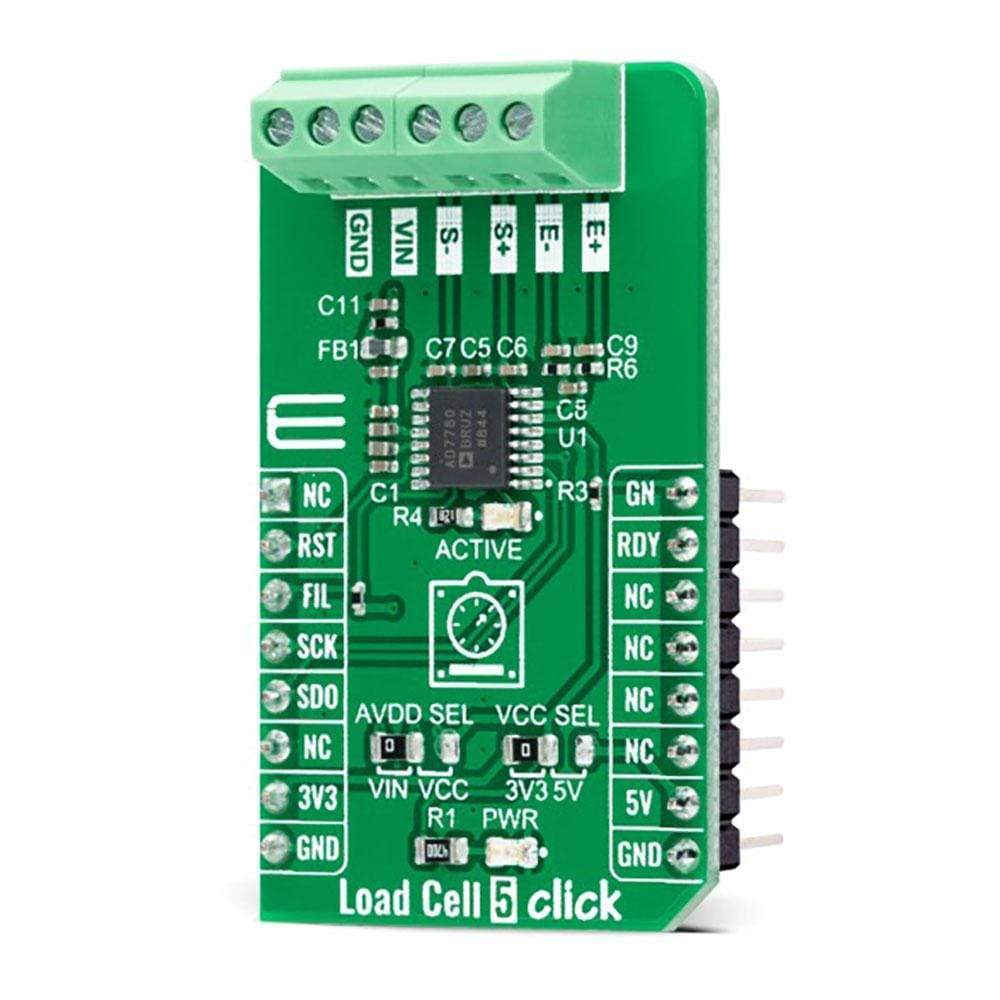
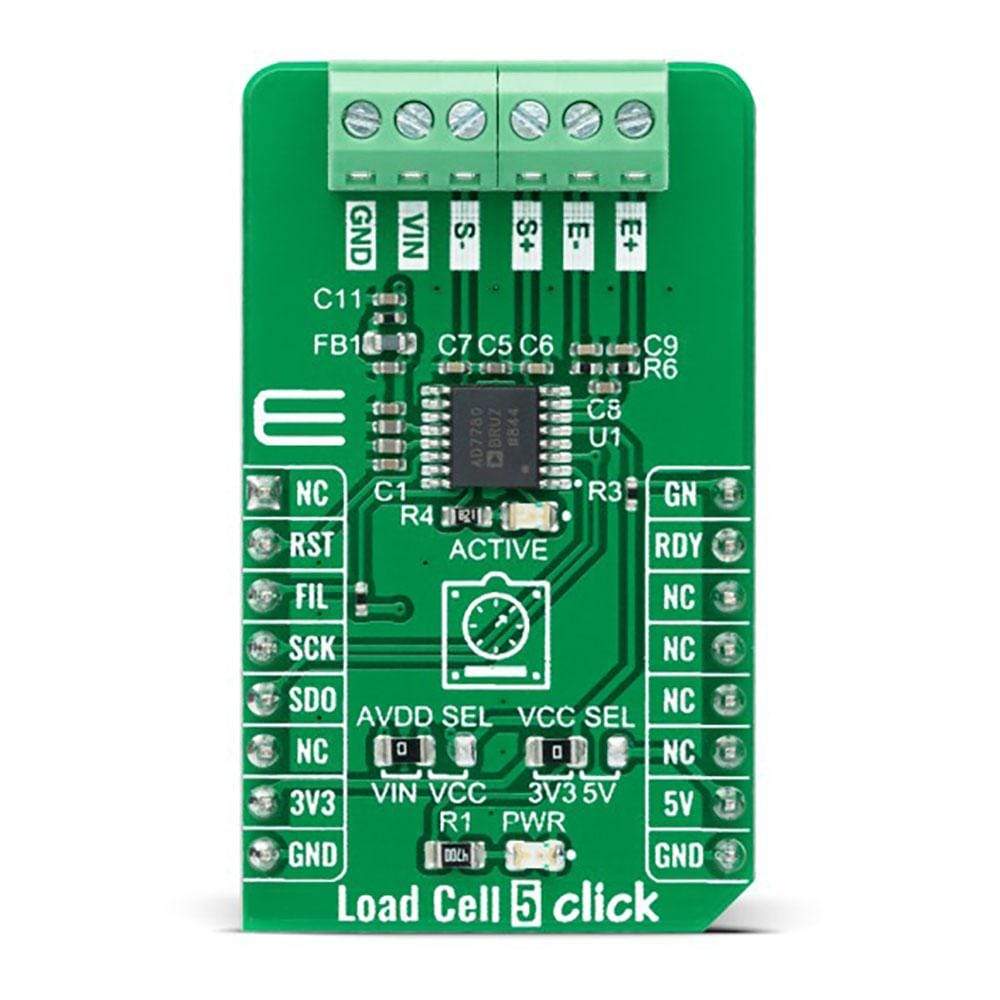
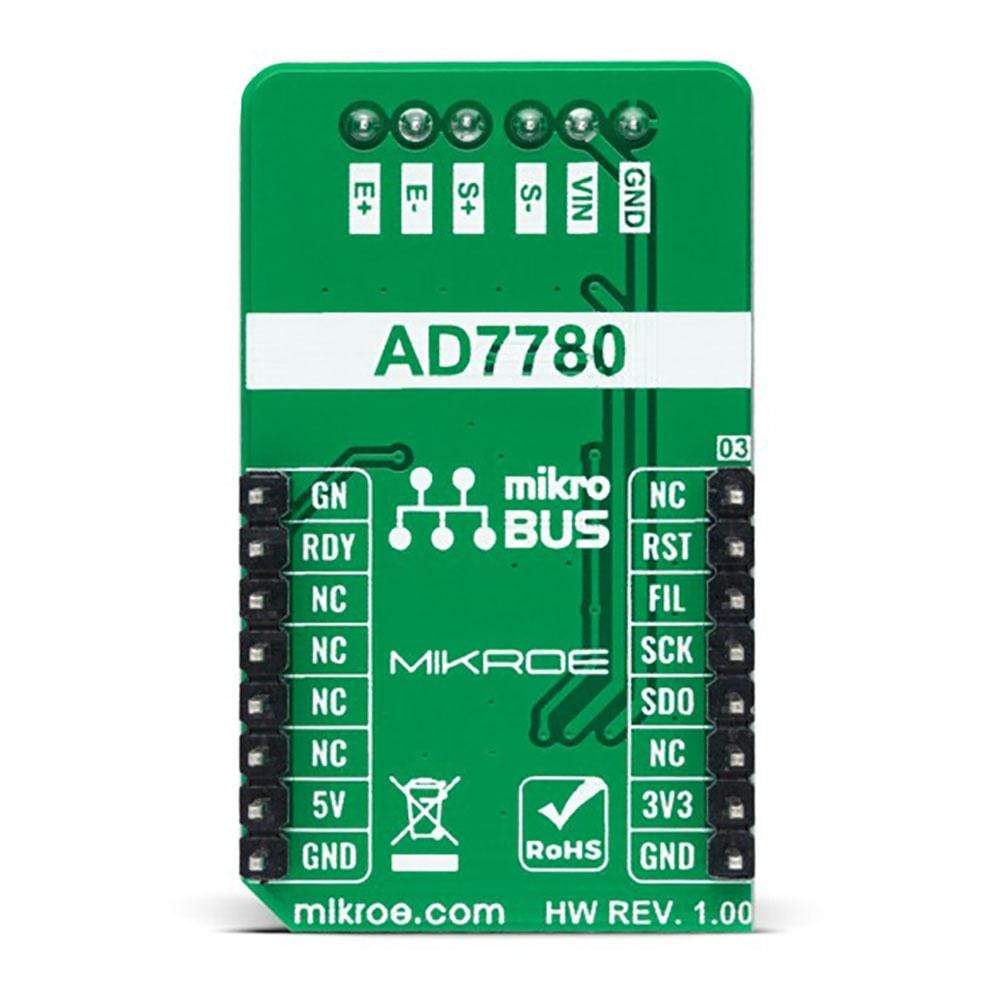
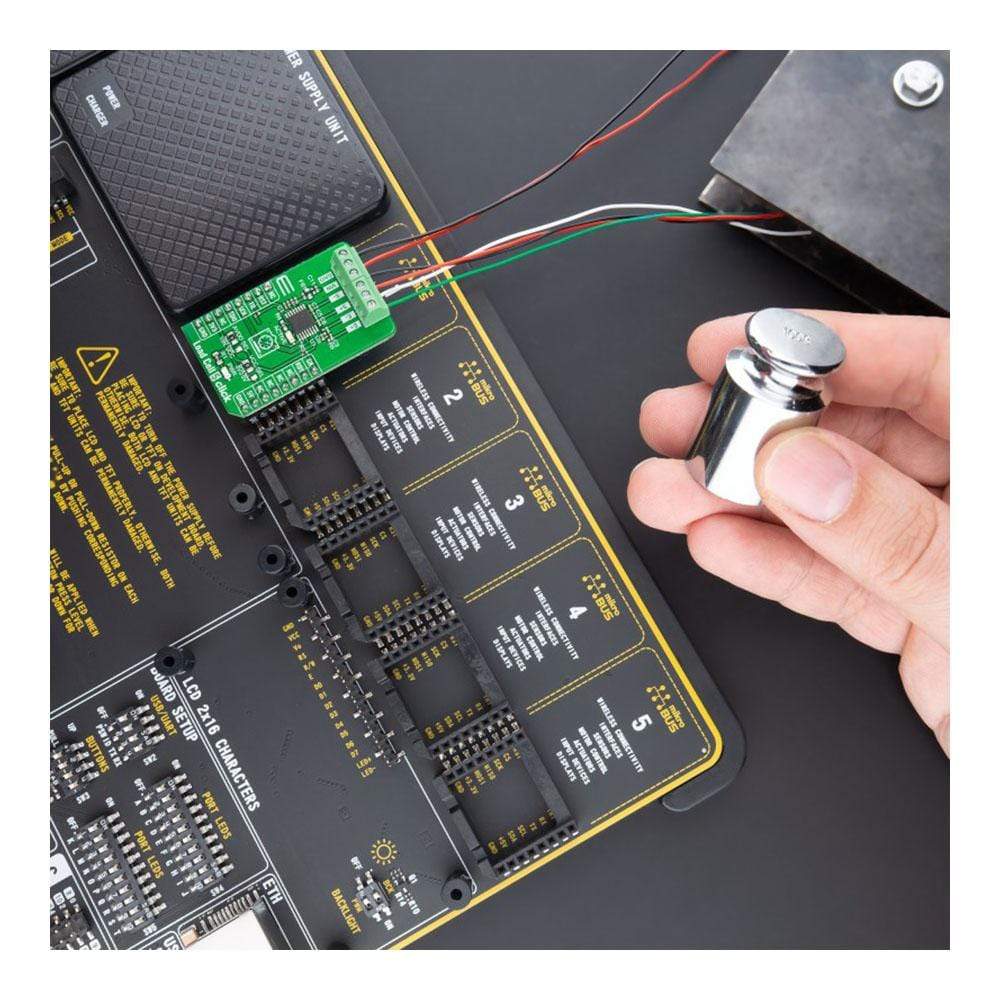
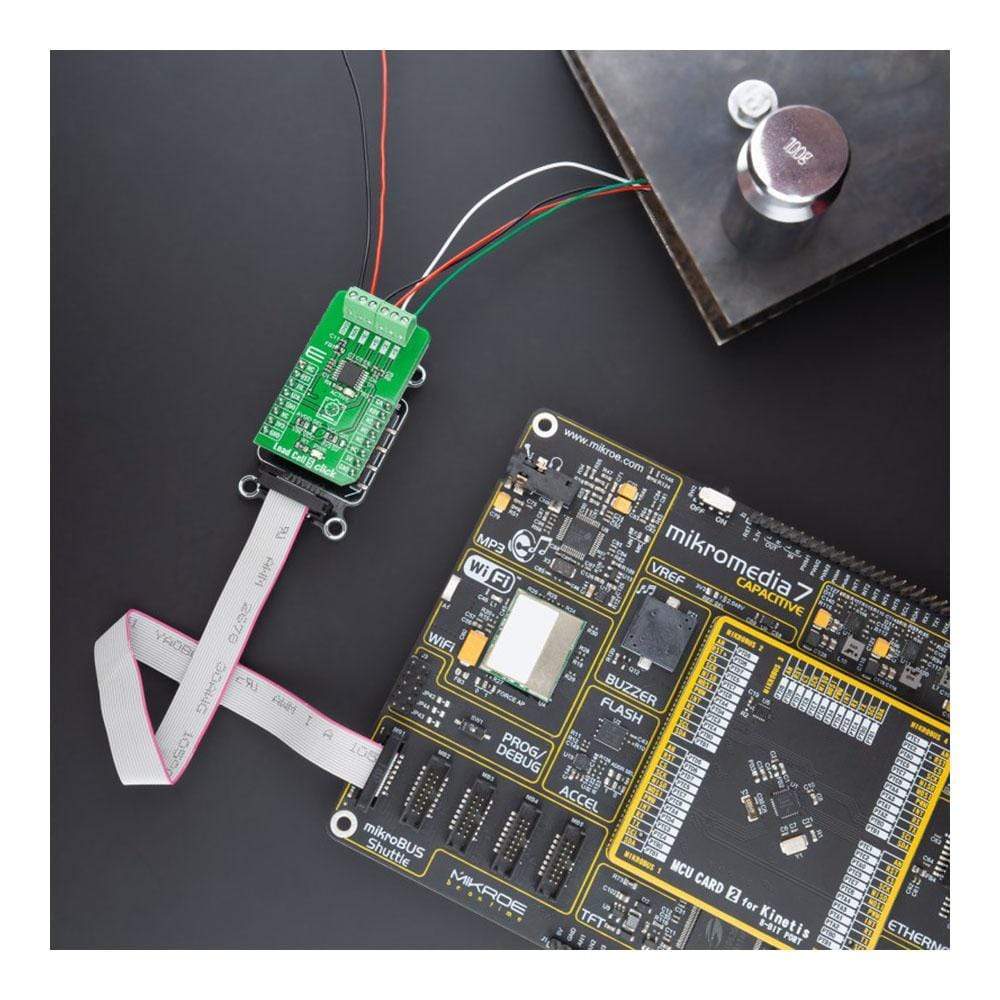
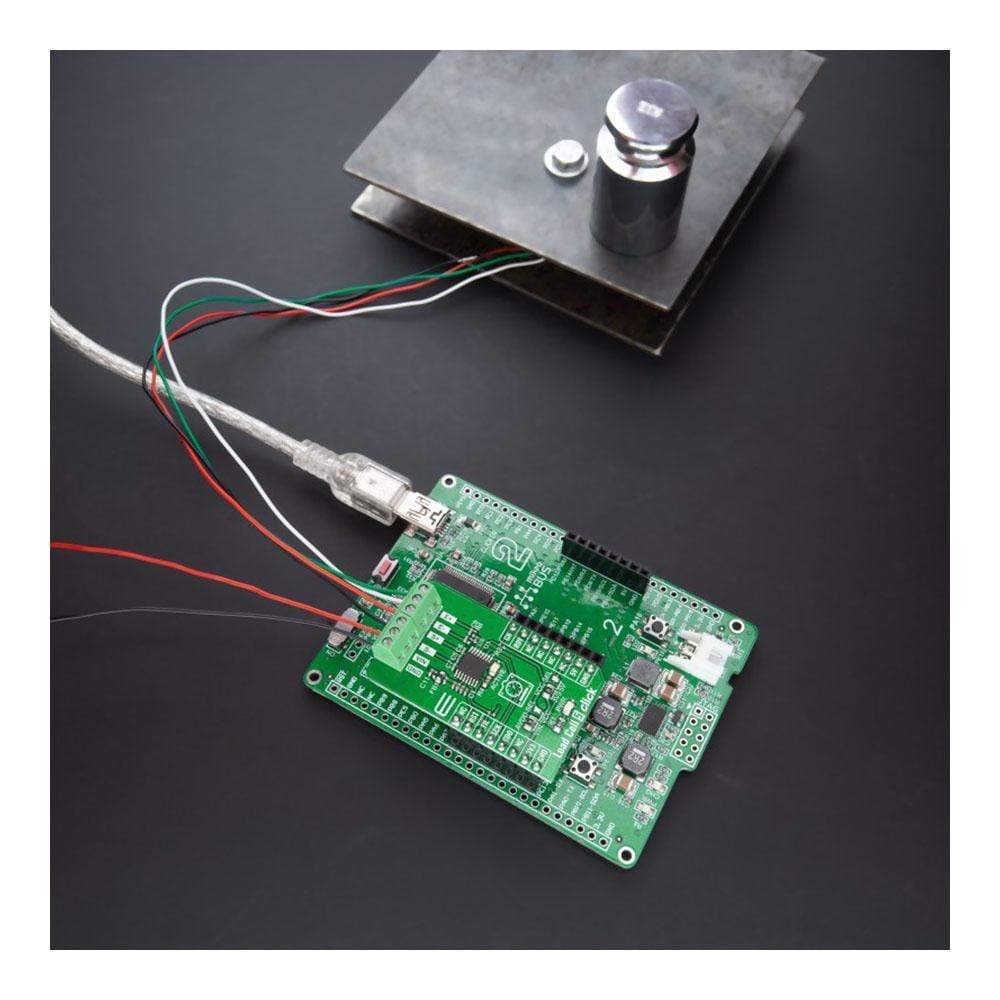
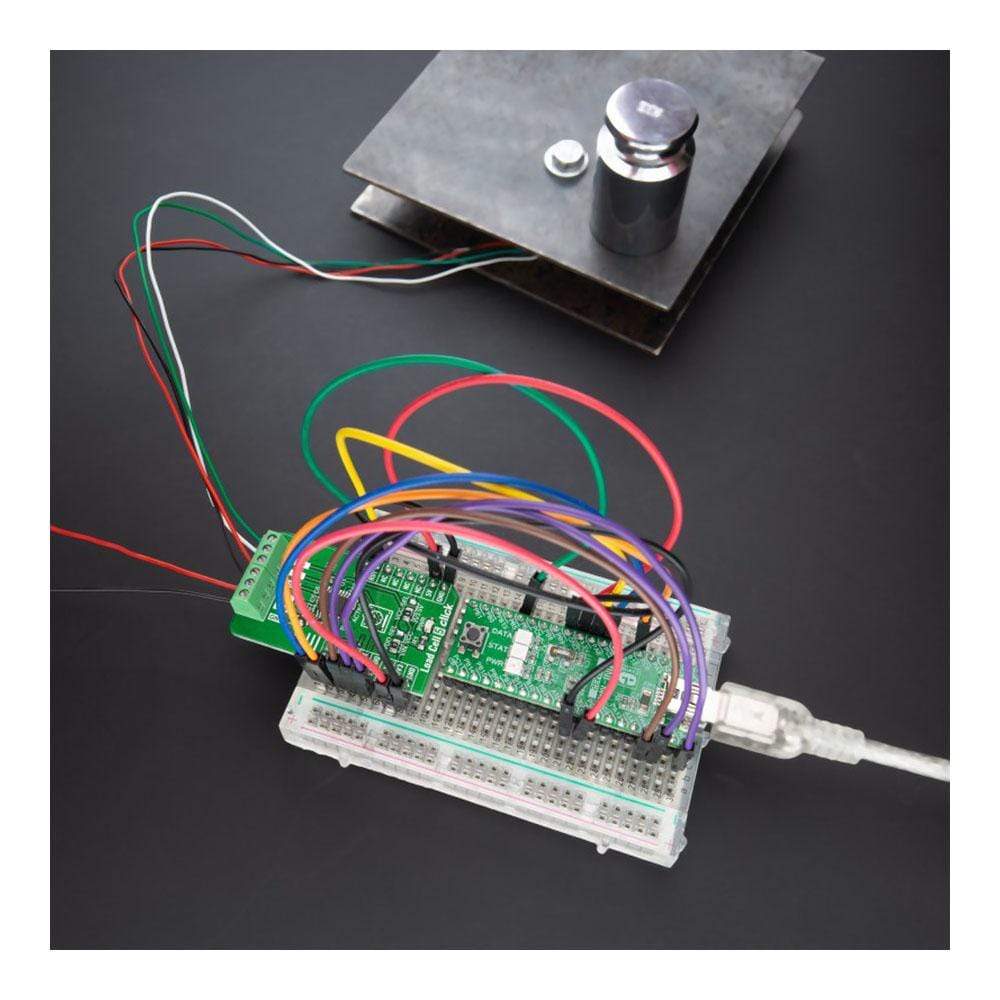
Overview
The Load Cell 5 Click Board™ is a compact add-on board representing a weigh scale solution. This board features the AD7780, a pin-programmable, low-power, 24-bit sigma-delta ΣΔ ADC from Analog Devices. It interfaces directly to the load cell, where the low-level signal from the load cell is amplified by the AD7780’s internal low noise programmable gain amplifier programmed to operate with a gain of 128 or 1. It also has a power-down mode allowing the user to switch off the power to the bridge sensor and power down the AD7780 when not converting, increasing the product battery life. This Click Board™ has many features that make it a perfect solution for safety-critical and weight measurement applications.
The Load Cell 5 Click Board™ is supported by a mikroSDK compliant library, which includes functions that simplify software development. This Click Board™ comes as a fully tested product, ready to be used on a system equipped with the mikroBUS™ socket.
Downloads
Le La carte Click Board™ Load Cell 5 est une carte complémentaire compacte représentant une solution de pesage. Cette carte comprend l'AD7780, un convertisseur analogique-numérique sigma-delta ΣΔ 24 bits programmable par broches et à faible consommation d'Analog Devices. Elle s'interface directement avec la cellule de charge, où le signal de bas niveau de la cellule de charge est amplifié par l'amplificateur de gain programmable à faible bruit interne de l'AD7780 programmé pour fonctionner avec un gain de 128 ou 1. Elle dispose également d'un mode de mise hors tension permettant à l'utilisateur de couper l'alimentation du capteur de pont et de mettre hors tension l'AD7780 lorsqu'il n'effectue pas de conversion, augmentant ainsi la durée de vie de la batterie du produit. Cette carte Click Board™ présente de nombreuses fonctionnalités qui en font une solution parfaite pour les applications de mesure de poids et de sécurité critiques.
La cellule de charge 5 Click Board™ est pris en charge par une bibliothèque compatible mikroSDK, qui comprend des fonctions qui simplifient le développement logiciel. Cette Click Board™ est un produit entièrement testé, prêt à être utilisé sur un système équipé du socket mikroBUS™.
| General Information | |
|---|---|
Part Number (SKU) |
MIKROE-4510
|
Manufacturer |
|
| Other | |
Country of Origin |
|
HS Code Customs Tariff code
|
|
EAN |
8606027382109
|
Warranty |
|
Frequently Asked Questions
Have a Question?
Be the first to ask a question about this.







